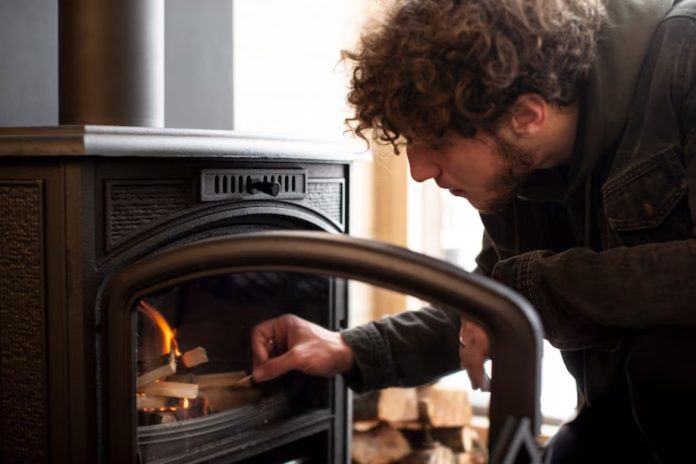As we’re already in midyear, it’s a great time to assess the condition of your home’s heating and ventilation system and make sure everything is running smoothly. Regular maintenance of your chimney and venting system is essential for keeping your home safe, your heating system efficient, and your family warm and comfortable. Whether you use your fireplace every day or just on special occasions, keeping your chimney in top shape is crucial for preventing safety hazards like fires or carbon monoxide poisoning.
In this article, we’ll explore pro tips for maintaining your chimney system that will help ensure it runs smoothly throughout 2025 and beyond. From inspections to cleanings, we’ll cover everything you need to know to keep your flue system safe and efficient year-round.
1. Why Regular Maintenance Is Essential
Chimneys and venting systems play a critical role in your home’s heating. Without regular maintenance, your system can accumulate dangerous debris, build-up of flammable materials, and even develop structural issues that can lead to leaks or blockages. These problems can pose serious safety hazards, such as chimney fires, carbon monoxide poisoning, and inefficient heating.
A little attention to your system every year can go a long way in maintaining the safety and comfort of your home. Regular check-ups can help identify minor issues before they turn into expensive, time-consuming repairs, giving you peace of mind while saving you money.
2. Schedule an Annual Inspection
The first step to keeping your chimney and venting system in good working order is scheduling an annual inspection. According to the Chimney Safety Institute of America (CSIA), it’s essential to have your flue and ventilation system inspected at least once a year, even if you don’t use it frequently. Annual inspections help identify issues like cracks in the masonry, blockages from debris or animal nests, or the build-up of dangerous creosote.
A professional technician will inspect both the exterior and interior of your system to ensure that everything is structurally sound and free of blockages. They’ll check for leaks, deterioration, and any other issues that might compromise the safety or performance of your fireplace or heating system. With regular inspections, you can avoid potentially hazardous situations and keep your system running smoothly all year.
3. Clean Your Venting System Regularly
One of the most important aspects of maintaining your chimney is cleaning it regularly. When wood burns in your fireplace, it produces a byproduct known as creosote, which can accumulate in your chimney system. Creosote is highly flammable and can cause dangerous fires if not cleaned regularly. According to the National Fire Protection Association (NFPA), the leading cause of chimney fires is creosote buildup.
Professional cleaning will thoroughly remove creosote and other debris from your flue and venting system. How often you need to clean your system depends on how frequently you use your fireplace and the type of fuel you burn. If you use your fireplace regularly, you may need cleaning every year. If you only use it occasionally, you may be able to go a bit longer between cleanings.
However, always err on the side of caution. If you notice that your system has a strong odor, excessive smoke, or reduced airflow, it’s a sign that cleaning is overdue.
4. Address Blockages Promptly
Blockages in your chimney or flue can impede airflow and cause smoke to back up into your home. Common blockages include debris like leaves, twigs, or animal nests, as well as the buildup of creosote or soot. Animals like birds, squirrels, and raccoons can sometimes make their way into your chimney, creating obstructions.
If you notice any signs of blockages, such as smoky odors inside your home or difficulty starting a fire, contact a professional immediately. Blockages can be dangerous to clear without the right equipment and expertise. A professional chimney sweep will use specialized tools to clear your system safely and efficiently.
5. Install a Chimney Cap for Extra Protection
A chimney cap is one of the simplest and most cost-effective ways to protect your system from the elements and prevent blockages. A chimney cap serves as a barrier that keeps rain, snow, debris, and animals out of your flue. It also prevents downdrafts and helps improve your system’s efficiency.
Installing a chimney cap can save you from expensive repairs caused by water damage or animal infestations. It’s a small investment that can provide significant protection for your fireplace and venting system.
6. Repair Cracks and Damage Promptly
Over time, the masonry of your fireplace and venting system can deteriorate, especially if exposed to extreme weather conditions. Cracks in the brickwork or mortar joints can let water into the system, causing rust, rot, and further damage. These issues can also lead to dangerous carbon monoxide leaks or inefficiencies in your heating system.
If you notice cracks, loose bricks, or other visible signs of damage, don’t wait to get them repaired. The sooner you address these issues, the less expensive the repair will be. A professional service like Local Chimney Services can restore your system’s integrity and keep it running safely.
7. Ensure Proper Ventilation
Proper ventilation is crucial for the safe and efficient operation of your chimney and fireplace system. If your venting system is not venting properly, it can lead to poor combustion, reduced heating efficiency, and dangerous indoor air quality issues. You should make sure that the air pressure inside your home is balanced so that your chimney can effectively vent smoke and gases outdoors.
If you notice that your fireplace is difficult to light, has a lot of smoke, or isn’t producing as much heat, it may be a sign of ventilation issues. A professional chimney technician can inspect your ventilation system and make adjustments as needed.
8. Keep Your Fireplace Clean and Safe
In addition to maintaining the chimney itself, keeping your fireplace clean is also important for safety and efficiency. Remove any ash or soot buildup from the fireplace after each use, and check the firebox for cracks or damage. Regularly clean the glass doors and remove any debris from the hearth to keep your fireplace in good condition.
Ensure that the damper is working properly, as a stuck damper can cause smoke and heat to enter your home. A functioning damper will allow for proper airflow when the fire is burning and prevent drafts when the fireplace is not in use.
9. Use the Right Fuel
The type of fuel you use in your fireplace can affect your chimney’s cleanliness and efficiency. Hardwoods like oak, hickory, and maple are the best options because they burn hotter and produce less creosote compared to softwoods like pine. Softwoods tend to create more buildup, requiring more frequent cleaning.
Avoid burning paper, cardboard, or other non-wood materials in your fireplace, as these can release harmful chemicals and cause excessive soot buildup in your chimney.
10. Stay Safe and Protect Your Home
Finally, always prioritize safety when using your fireplace and chimney. Ensure that smoke detectors and carbon monoxide detectors are installed and working properly in your home. Keep any flammable materials away from the fireplace, and never leave a fire unattended.
If you’re planning to use your fireplace regularly, consider investing in a fireplace screen to prevent sparks from escaping and potentially igniting nearby objects.
Ready to Keep Your Chimney Running Smoothly in 2025?
Chimney maintenance doesn’t have to be complicated, and by following these expert tips, you can ensure that your chimney is ready to provide warmth and comfort all year long. Whether it’s scheduling a professional inspection, cleaning, or making minor repairs, taking action today will save you time and money in the future.
Visit our website at local-chimney-services.com to schedule your inspection and cleaning, and keep your chimney running smoothly for 2025 and beyond!








